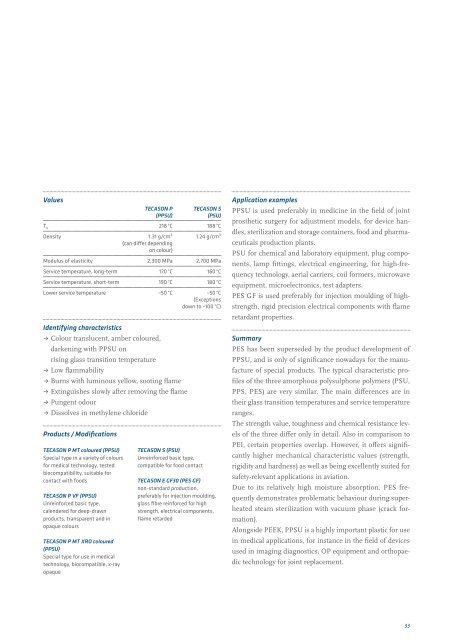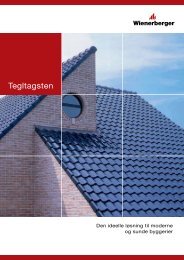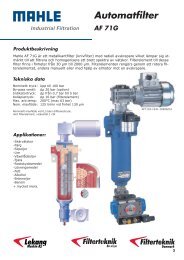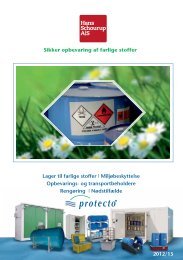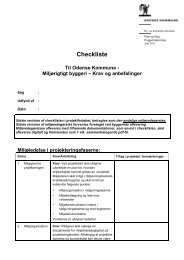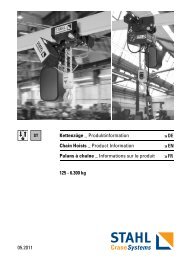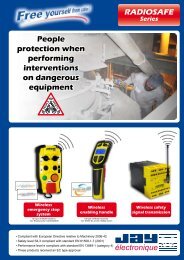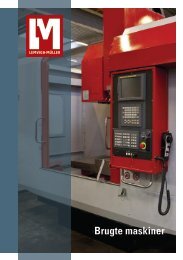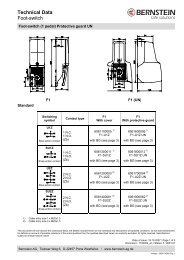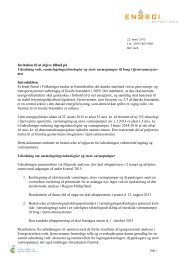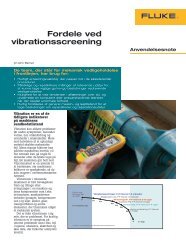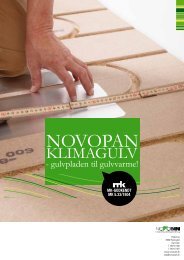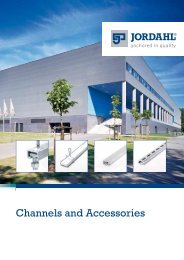Engineering plastics â The Manual - F.wood-supply.dk
Engineering plastics â The Manual - F.wood-supply.dk
Engineering plastics â The Manual - F.wood-supply.dk
You also want an ePaper? Increase the reach of your titles
YUMPU automatically turns print PDFs into web optimized ePapers that Google loves.
Values<br />
TECASON P<br />
(PPSU)<br />
TECASON S<br />
(PSU)<br />
T g 218 °C 188 °C<br />
Density 1.31 g/cm³ 1.24 g/cm³<br />
(can differ depending<br />
on colour)<br />
Modulus of elasticity 2,300 MPa 2,700 MPa<br />
Service temperature, long-term 170 °C 160 °C<br />
Service temperature, short-term 190 °C 180 °C<br />
Lower service temperature –50 °C –50 °C<br />
(Exceptions<br />
<br />
down to –100 °C)<br />
Identifying characteristics<br />
ˌˌColour translucent, amber coloured,<br />
darkening with PPSU on<br />
rising glass transition temperature<br />
ˌˌLow flammability<br />
ˌˌBurns with luminous yellow, sooting flame<br />
ˌˌExtinguishes slowly after removing the flame<br />
ˌˌPungent odour<br />
ˌˌDissolves in methylene chloride<br />
Products / Modifications<br />
TECASON P MT coloured (PPSU)<br />
Special type in a variety of colours<br />
for medical technology, tested<br />
biocompatibility, suitable for<br />
contact with foods<br />
TECASON P VF (PPSU)<br />
Unreinforced basic type,<br />
calendered for deep-drawn<br />
products, transparent and in<br />
opaque colours<br />
TECASON P MT XRO coloured<br />
(PPSU)<br />
Special type for use in medical<br />
technology, biocompatible, x-ray<br />
opaque<br />
TECASON S (PSU)<br />
Unreinforced basic type,<br />
compatible for food contact<br />
TECASON E GF30 (PES GF)<br />
non-standard production,<br />
preferably for injection moulding,<br />
glass fibre reinforced for high<br />
strength, electrical components,<br />
flame retarded<br />
Application examples<br />
PPSU is used preferably in medicine in the field of joint<br />
prosthetic surgery for adjustment models, for device handles,<br />
sterilization and storage containers, food and pharmaceuticals<br />
production plants.<br />
PSU for chemical and laboratory equipment, plug components,<br />
lamp fittings, electrical engineering, for high-frequency<br />
technology, aerial carriers, coil formers, microwave<br />
equipment, microelectronics, test adapters.<br />
PES GF is used preferably for injection moulding of highstrength,<br />
rigid precision electrical components with flame<br />
retardant properties.<br />
Summary<br />
PES has been superseded by the product development of<br />
PPSU, and is only of significance nowadays for the manufacture<br />
of special products. <strong>The</strong> typical characteristic profiles<br />
of the three amorphous polysulphone polymers (PSU,<br />
PPS, PES) are very similar. <strong>The</strong> main differences are in<br />
their glass transition temperatures and service temperature<br />
ranges.<br />
<strong>The</strong> strength value, toughness and chemical resistance levels<br />
of the three differ only in detail. Also in comparison to<br />
PEI, certain properties overlap. However, it offers significantly<br />
higher mechanical characteristic values (strength,<br />
rigidity and hardness) as well as being excellently suited for<br />
safety-relevant applications in aviation.<br />
Due to its relatively high moisture absorption, PES frequently<br />
demonstrates problematic behaviour during superheated<br />
steam sterilization with vacuum phase (crack formation).<br />
Alongside PEEK, PPSU is a highly important plastic for use<br />
in medical applications, for instance in the field of devices<br />
used in imaging diagnostics, OP equipment and orthopaedic<br />
technology for joint replacement.<br />
33


